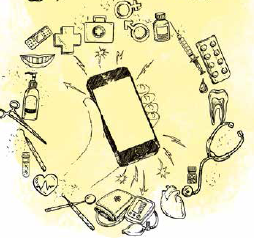 Electronic Heath Records/ Electronic Medical Records
Electronic Heath Records/ Electronic Medical Records
We asked C-suite executives from the EHR/EMR arena where the greatest opportunities for improvement lie and what the greatest barriers to adoption are.
 Rob Cosinuke
Rob Cosinuke
Chief Marketing Officer, athenahealth
President, Epocrates, an athenahealth service
Opportunities: Huge opportunities exist for life-sciences companies that are willing to embrace the emerging world of value-based care. Pharma should be introducing new programs that illustrate the clinical, as well as the economic benefits of drugs based on real-world patient encounters and data. With such programs, the gap between pharmaceutical R&D teams, their scientific knowledge, and prescribers can be made much smaller, and thereby impact patient outcomes in new and meaningful ways. To do this, pharma must learn how to use “in the wild" health and claims data to its advantage.
The opportunity to go beyond the pill is massive; entering the inspiring world of population health is prime for pharma.
Barriers: The problem is that pharma brings a traditional marketing mindset to the EMR as if it were a “channel," which is a fundamentally flawed strategy. First, the EMR marketplace is enormously fragmented as no one vendor holds a significant share of HCPs. Second, EMRs are workflow tools owned by the IDN — not media/ad channels. Enterprise-grade EMRs are not built to accept traditional pharma messaging; nor would HCPs or enterprise IDNs tolerate messaging in their workflow.
Finally, EMRs are also deployed to establish a common workflow and align owned and affiliated physicians across large healthcare enterprises. They align physicians with an institution’s goals and proprietary care pathways, and gradually shift drug formulary decision-making away from individual physicians to centralized committees. To avoid disintermediation, pharma should focus on EMR-driven adherence for the biggest short-term gains, particularly for groups of patients with chronic symptoms.
Looking long-term, pharma can explore opportunities within EMRs that support population health product development, and improved clinical diagnostics.
 George Cuthbert
George Cuthbert
VP
Medent
Opportunities: The opportunities are to use the EMR as a tool to alert the providers of patient status, potential dangers, and compliance. By collating all available information from multiple sources within the care coordination network, care gaps can be determined and presented at the point of care. Pinpoint effective intelligence is key to making the EMR an effective tool. Medication adherence can be increased with better medication management made available by sharing information within the national healthcare network at the time of encounter. If providers know that the patient is not adhering they can efficiently counsel to effect change and improve the outcome. E-prescribing will increase security and compliance while providing additional convenience for the patients we all serve.
Barriers: I don’t feel it is just one thing, and for me the question isn’t so much adoption because the vast majority of the market is currently automated. We are very interested in effective use and this is a main focus along with new innovation to take full advantage of the latest ideas and opportunities. One factor that has been holding things back is efficiency of use. All systems are trying to do many of the same things. It becomes a matter how efficient, fast, simple, and intuitive the systems function. Initial and on-going setup, training, and follow-up support are critical assuming a quality, reliable system is being deployed. A good EMR system effectively setup and deployed is critical to reaping the benefits that a good EMR can provide.
 Dr. Tom Giannulli
Dr. Tom Giannulli
Chief Medical Information Officer
Kareo
Opportunities: The area for greatest improvement is in building stronger integration between disparate systems. Vendors need to make it easier for providers to transfer data between care providers and connect other tools to their EHR at a lower cost. Improving care and reducing overall costs across healthcare will largely depend on improving our ability to share information and more easily upgrade or connect systems.
Barriers: Providers who have not moved to an EHR are worried about making the wrong choice or not being able to get the flexibility they want with a truly mobile EHR. In the past, EHRs were traditionally client-server based, expensive, and hard to implement with long-term contracts so you didn’t want to pick the wrong one. Those feelings have carried on despite improvements in technology and strategies to more effectively implement EHRs in practices. Today, you can find an affordable — even free — cloud-based, mobile EHR that comes with great training, implementation, and support. Providers need to let go of the past and take a fresh look at the marketplace. The fact is that as the industry changes, practices won’t be able to survive without the right technology. (PV)










